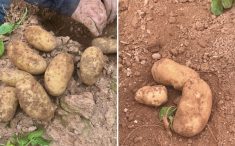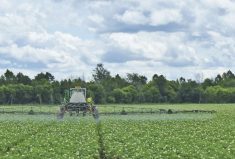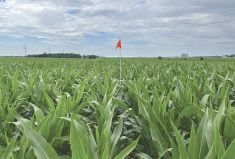What do soil-health testing systems have in common? Obvious answers aside, most weren’t developed in — or for — the Canadian Prairies.
Two University of Saskatchewan researchers aim to change that with the first Saskatchewan-based soil health scoring framework.
“Soil health is defined as the capacity of the soil to function,” says Qianyi (Athena) Wu, who worked on the project as part of her master’s thesis with associate professor Kate Congreves. “The soil health scoring framework is a tool for assessing and interpreting the soil health status of farmland.”
Read Also

Could crop sharing be a viable option for your farm?
Crop sharing could be a good option for young and beginning farmers.
Congreves says the scoring system is designed to evaluate three important dimensions of soil health — its chemical, biological and physical attributes — and offer a value between 0 and 100, much like a report card.
Wu says all three attributes are important.
“Normal soil tests only look at chemistry, which usually only reflects the nutrient balance in the soil, and then you can calculate (how much) fertilizer you should use. But (that leaves out) the organic parts, and the organic parts are related to the biological fitness of soil, and also the physical parts of the soil, like aggregation.”
Congreves agrees. “Soil is a living, breathing ecosystem. It’s not fertilizer in a bag, it’s not nutrients in a bag.”
Study design and results
In the fall of 2018, Congreves and Wu collected soil samples from three depths from 55 arable fields across Saskatchewan, as well as native prairie soil samples. The samples were drawn from four soil zones (gray, black, dark brown and brown).
For each sample, 23 attributes across the three categories were measured, including nitrogen and other macro- and micronutrients, soil organic carbon and soil electrical conductivity (chemical); active carbon and soil respiration (biological); and aggregate stability and texture (physical).
Based on the data, the researchers developed scoring functions and a list of weighting factors to integrate results into a single soil health score. The highest weighting factors were soil carbon and nitrogen indices (soil organic C, active C, total N and soil protein) and total phosphorus.
Wu says those are the five factors farmers need to watch when they’re doing a soil test.
“Some attributes of the soil are more important than others,” Congreves says. “It’s crucial to find out which we should be paying more attention to.”
As part of their research, Wu and Congreves also looked at links between soil health and crop productivity by analyzing cereal yields over 10 years in the areas where their samples were drawn. A positive relationship between yield and soil health scores was most obvious during dry years.
Next steps
Phase two of the project will be an online tool. “We’re chipping away at it,” Congreves says.
Ultimately, the tool will be something farmers can use either as part of a soil testing routine, to troubleshoot specific problems, or to assess whether a new management practice, such as cover cropping, is yielding hoped-for results.
Congreves says it will be “just another tool in farmers’ toolbox to help track changes over time to see if you’re headed in the right direction or not.”
Down the line, with help from collaborators in the other Prairie provinces, the soil health framework will be tested and adapted for those regions too.
Congreves says the research is exciting because it gives farmers the tools to measure what’s happening in their soil so they can manage it and boost productivity.
But management, she says, is the tricky part. Currently, they’re working on developing best management practices for Saskatchewan. “We have soil health measurement on one hand and soil health management on the other. We want to have both sides of that equation.”
















